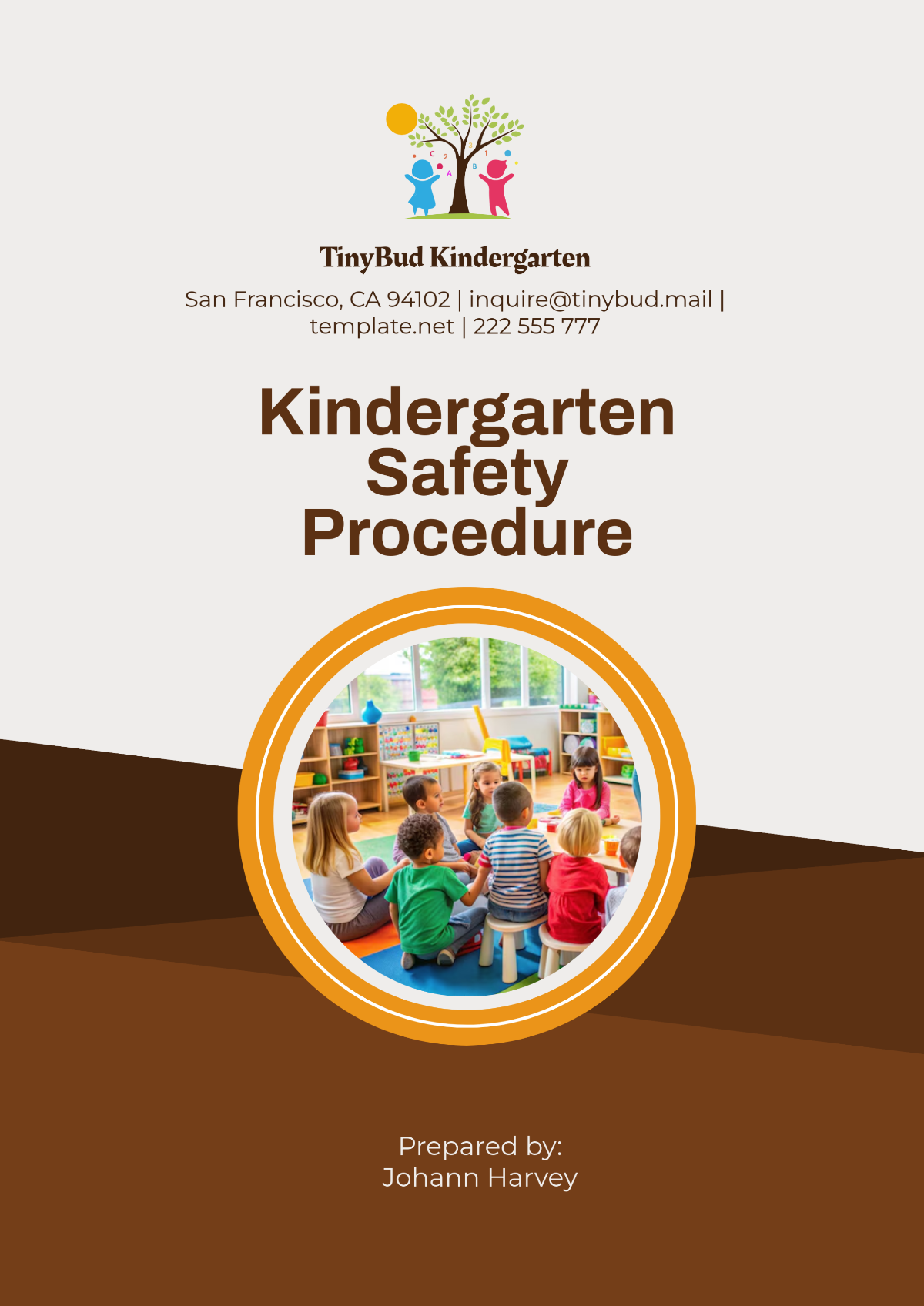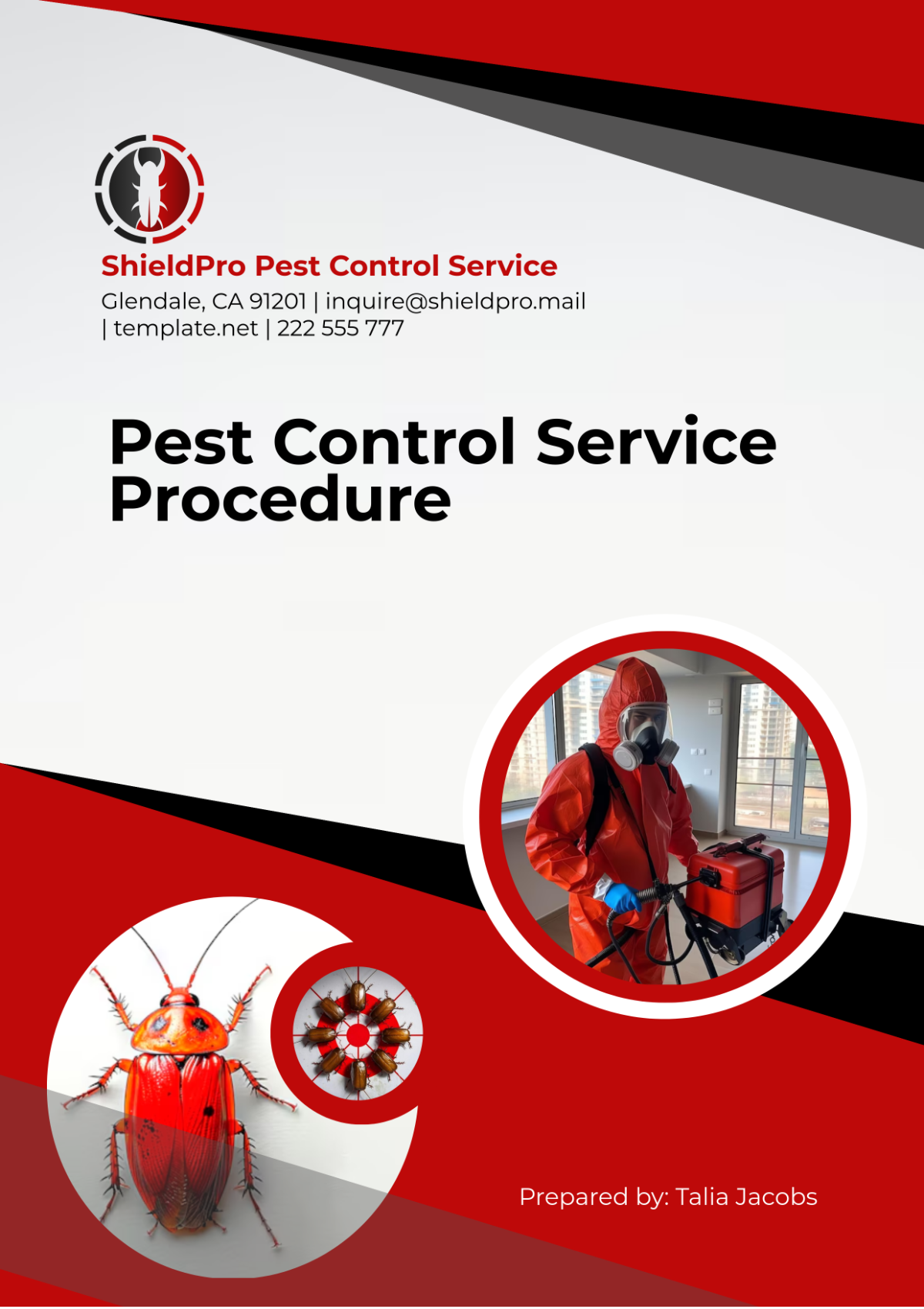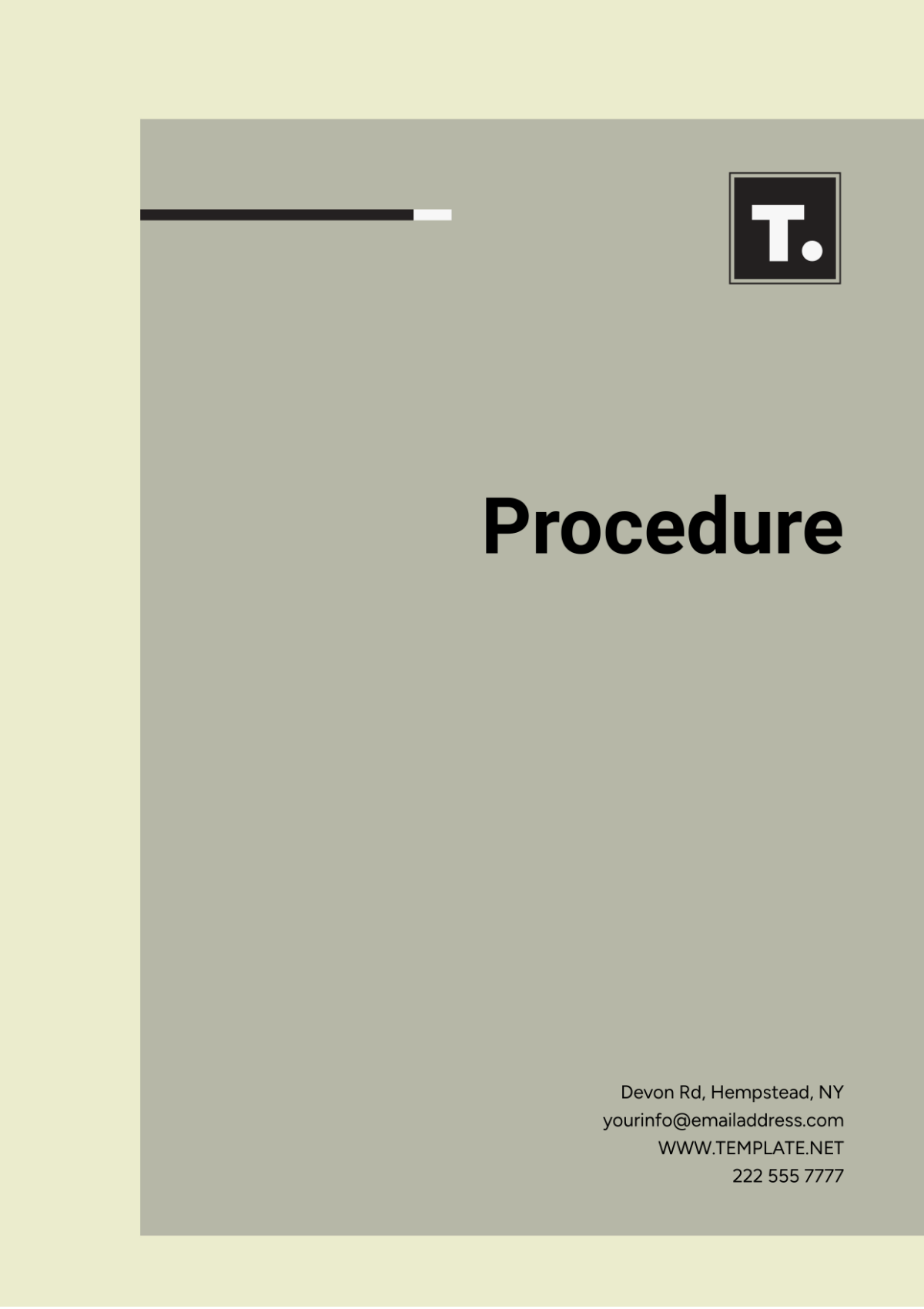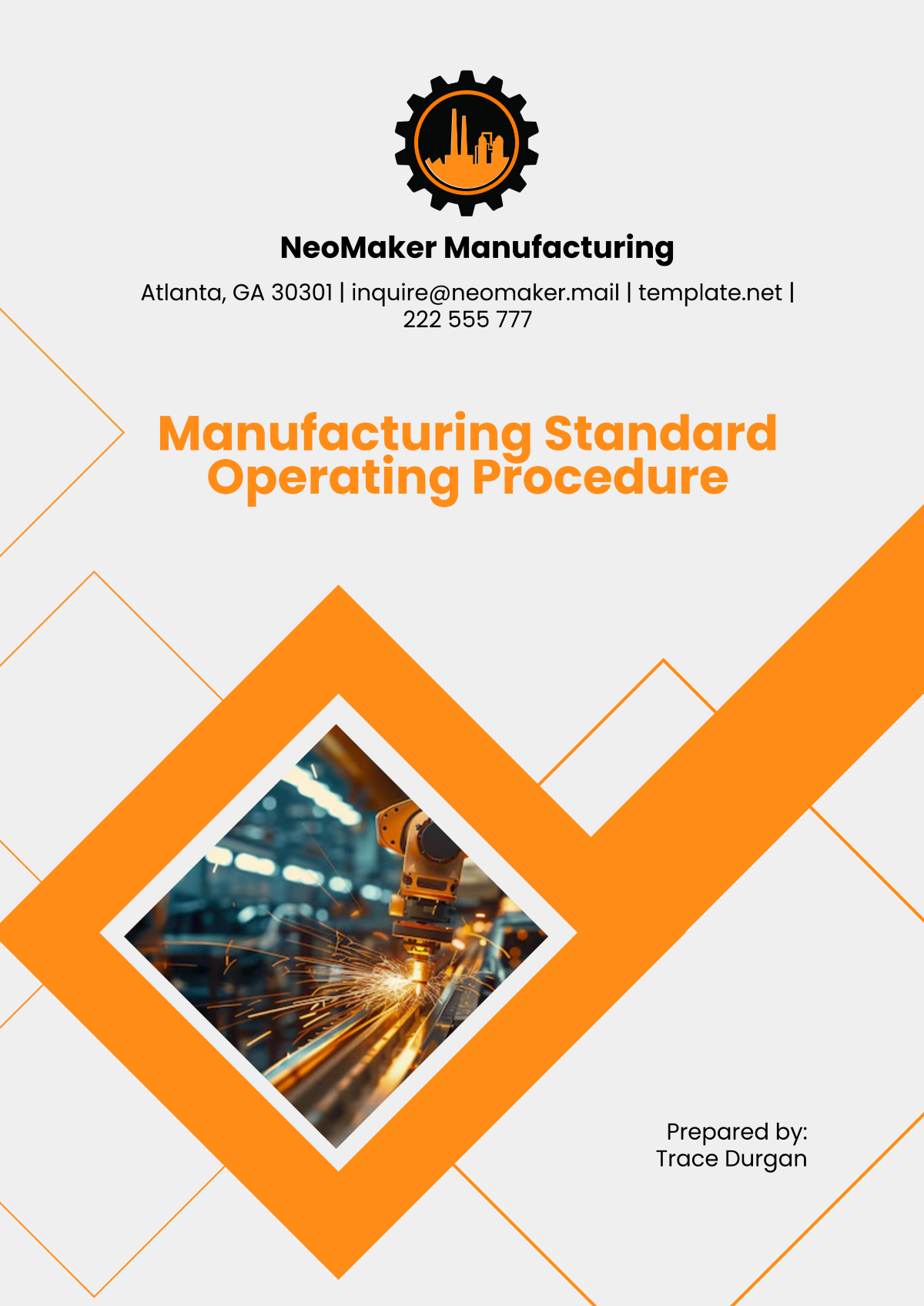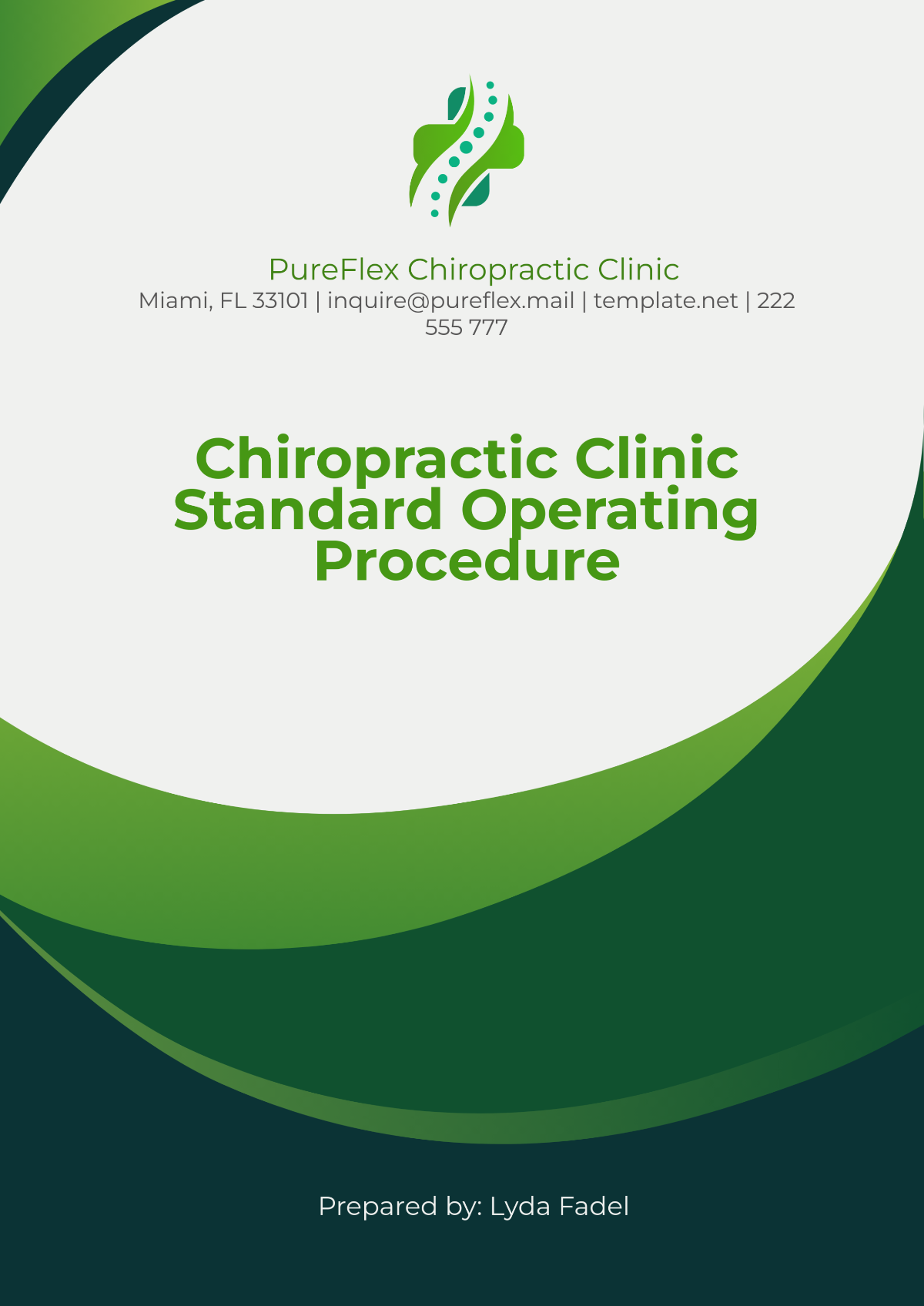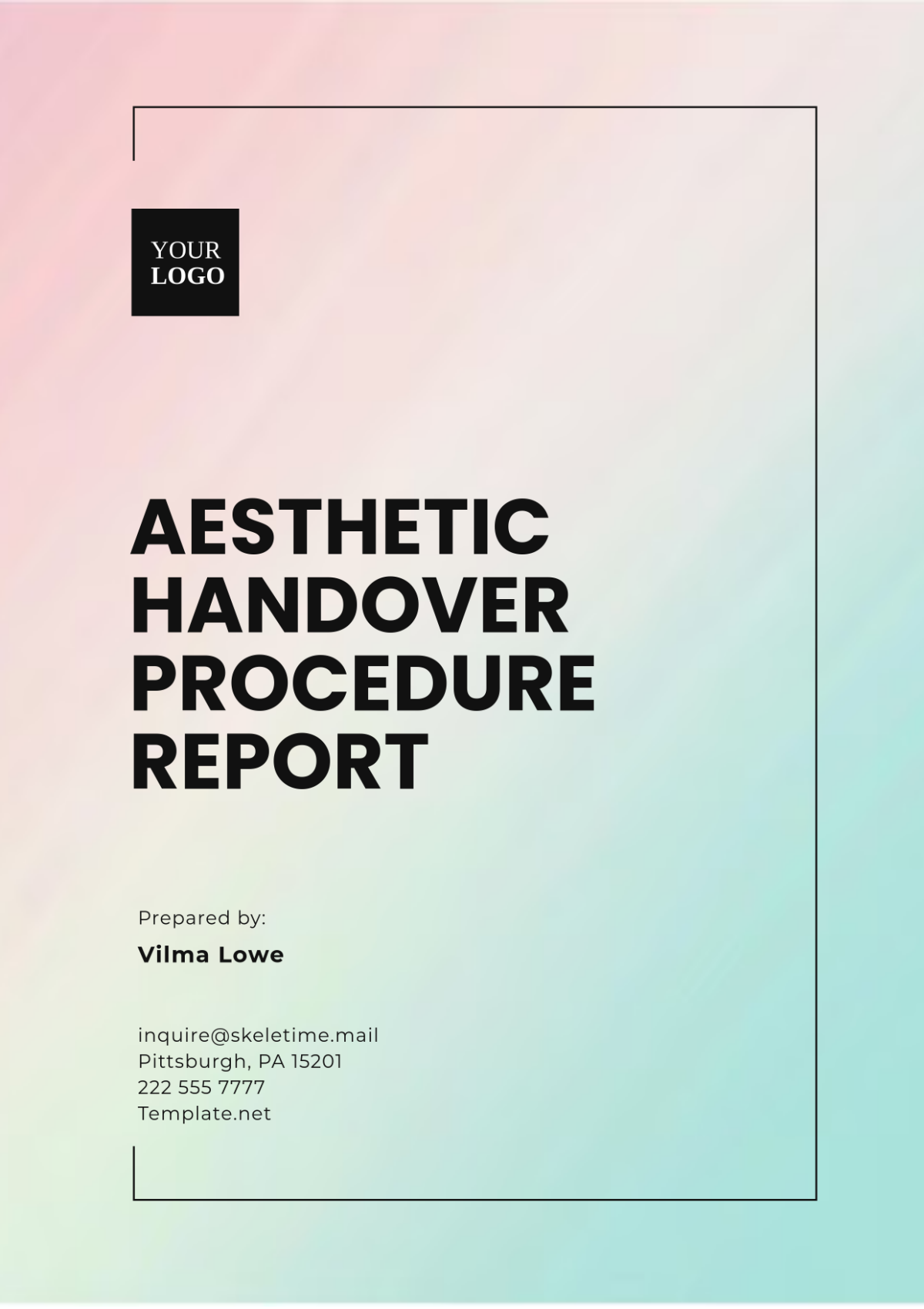Free Pharmaceutical Standard Operating Procedure Template
Pharmaceutical Standard Operating Procedure
I. Purpose
A. This SOP outlines the specific steps to clean and maintain pharmaceutical manufacturing equipment to ensure compliance with Good Manufacturing Practices (GMP). It is intended to prevent contamination, ensure consistent product quality, and maintain operational efficiency. By standardizing the cleaning process, it reduces variability and ensures repeatable results. Following this procedure also minimizes the risk of equipment malfunctions and extends the lifespan of the machinery.
B. The document serves as a guideline for all personnel involved in equipment handling, emphasizing the importance of cleanliness and maintenance. It addresses cleaning methods for different types of equipment, including fixed and portable machinery. Adherence to this SOP also ensures the facility meets regulatory inspections and audits. Ultimately, this procedure is critical to safeguarding patient safety by maintaining product integrity.
II. Scope
A. This SOP applies to all equipment used in manufacturing, testing, and packaging pharmaceutical products. It includes machinery in production areas, quality control labs, and other related departments. The procedure also covers cleaning validation and maintenance processes required for regulatory compliance. Both manual and automated cleaning methods are addressed.
B. This SOP excludes facility cleaning, personal protective equipment (PPE) maintenance, and equipment unrelated to pharmaceutical manufacturing. Equipment such as air-handling units and water systems are covered under separate SOPs. Processes related to the calibration of equipment are also beyond the scope of this document. The boundaries of applicability ensure clarity in roles and responsibilities across departments.
III. Responsibilities
A. Operators are responsible for carrying out all cleaning and maintenance activities according to this SOP. They must ensure that all steps are followed exactly as written and document the completion of tasks. In addition to their regular duties, operators must also provide a detailed report of any unusual occurrences or deviations from standard procedures that they observe during the process. This report should be communicated to their supervisors without delay.
B. Supervisors must review the cleaning activities for completeness and compliance, ensuring all necessary documentation is accurate and up to date. They are also tasked with verifying that operators have undergone appropriate training before executing this SOP. Supervisors fulfill an essential function by bringing attention to and forwarding issues and any observed deviations to the Quality Assurance (QA) department.
C. The QA department oversees the implementation of this SOP, reviews cleaning records, and ensures compliance with regulatory standards. QA personnel are responsible for conducting periodic audits of cleaning activities and validating any changes to the procedure. The maintenance personnel are responsible for managing the technical components involved in both repair processes and planned inspections, with the ultimate goal of guaranteeing that all equipment continues to function properly and remains safe for use.
IV. Definitions and Abbreviations
A. "Cleaning Validation" refers to documented proof that cleaning methods effectively remove contaminants, including residues of previous products, cleaning agents, and microorganisms. "Cross-contamination" is the unintentional transfer of substances between products, resulting in compromised product integrity. "Preventive Maintenance" involves scheduled activities designed to prevent equipment failure before it occurs.
B. GMP: Good Manufacturing Practice, a regulatory standard for pharmaceutical manufacturing.
PPE: Personal Protective Equipment, such as gloves, goggles, and masks, required for cleaning operations.
SOP: Standard Operating Procedure, a written document specifying how a particular task is performed.
C. "Critical Control Points" are stages in the cleaning process where strict checks are necessary to ensure effectiveness. "Equipment Logbook" is a record maintained to document usage, cleaning, and maintenance activities for a specific piece of equipment. "Visual Inspection" involves a detailed examination of equipment surfaces to ensure no residues remain after cleaning.
V. Materials and Equipment
A. Only validated cleaning agents such as neutral detergents, ethanol, or isopropyl alcohol are permitted for use. In order to prevent scratches or deposits of fiber residue on the surfaces of equipment, it is essential to employ the use of soft brushes, lint-free wipes, and disposable cleaning cloths. Additionally, it is imperative to maintain and carefully cross-check a comprehensive list of approved cleaning materials during the preparation phase of the cleaning process.
B. Equipment such as Clean-in-Place (CIP) systems, portable spray bottles, and high-efficiency vacuum systems are used to facilitate cleaning. To guarantee a consistent level of cleaning effectiveness, it is essential to carefully calibrate automated systems. Additionally, it is crucial to assign brushes and tools to specific areas or particular pieces of equipment. This dedicated allocation is necessary to prevent the risk of cross-contamination.
C. All materials and tools must meet predefined quality and safety standards before use. Cleaning agents are required to be stored in an environment that is not only clean but also controlled in terms of temperature. This ensures that these cleaning agents do not become contaminated or degrade over time. Additionally, it is essential that materials and equipment undergo periodic inspections. These inspections are conducted to verify that they continue to meet and comply with established quality standards.
VI. Procedure
A. Preparation Steps
Inspect equipment thoroughly to identify visible residues, foreign materials, or potential damage. Ensure all required cleaning agents and tools are prepared and verified against the approved material list. Confirm that the designated cleaning area is sanitized and free from potential contaminants.
Operators must wear appropriate PPE, including gloves, goggles, and protective clothing, before starting the cleaning process. Ensure the equipment is turned off, locked, and tagged out to prevent accidental operation. Dismantle detachable parts following the manufacturer's guidelines, ensuring proper handling to avoid damage.
Verify the cleaning agents for expiration dates and lot numbers, recording this information in the equipment logbook. Inspect CIP systems or other cleaning machinery for proper setup and calibration. Communicate with supervisors to confirm readiness to proceed with the cleaning process.
B. Execution Steps
Begin cleaning by removing all visible residues using the designated cleaning agents and soft brushes or wipes. For automated equipment, run CIP systems as per the validated cleaning cycle. Rinse thoroughly with purified water to remove all traces of cleaning agents.
Dry all cleaned surfaces using compressed air or lint-free wipes to prevent water spots or residue buildup. Conduct a visual inspection to confirm that no contaminants remain. Perform swab tests where necessary to validate the effectiveness of the cleaning process.
Reassemble the equipment following the manufacturer's instructions, ensuring all parts are securely fitted. Conduct a trial run to verify the equipment operates correctly after cleaning. Document all observations, actions, and outcomes in the equipment logbook.
C. Post-Execution Steps
Properly dispose of used cleaning agents and materials in accordance with waste management protocols. Clean the surrounding area to ensure it is free from spills or discarded materials. Store unused cleaning agents and tools in their designated locations.
Complete the cleaning checklist and submit it to the supervisor for review and approval. Supervisors must verify that all records are accurate and signed off by the responsible operator. Address any deviations or anomalies immediately and document corrective actions.
Label the equipment with a "Cleaned" status tag, including the date, time, and operator’s initials. Record the equipment's status in the master cleaning log for traceability. Ensure the cleaned equipment is stored in the designated area until its next use.
VII. Documentation and Records
A. All cleaning activities must be recorded in the equipment logbook, including date, time, and operator initials. All checklists that have been completed are required to have the signatures of both the operator and the supervisor. In addition, if there are results from swab tests that are relevant, these must be attached to the cleaning records.
B. All logbooks and checklists need to be archived within the Quality Assurance department so that they are available for reference during any audits and inspections. It is essential that all related documentation is organized in a manner that ensures it can be easily retrieved whenever necessary and that it is maintained for a minimum duration of five years. In the event that any errors are found within the documentation, it is imperative that these errors are corrected without delay, and such corrections must be countersigned by the appropriate supervisor to ensure accountability and accuracy.
C. Detailed records of the training undertaken by the personnel who participate in cleaning activities must be meticulously maintained. It is imperative that all associated documentation adheres to the regulatory requirements ensuring accuracy and traceability. The Quality Assurance (QA) department holds the responsibility for guaranteeing that the record-keeping practices conform to established audit standards.
VIII. Safety and Precautions
A. Cleaning activities must prioritize worker safety and environmental protection. Operators must wear appropriate PPE, including gloves, goggles, face masks, and protective clothing, to minimize exposure to chemicals. Ensure that all cleaning agents are stored and handled according to safety data sheets (SDS) to prevent accidents.
B. Equipment must be de-energized, and lockout/tagout procedures must be followed before beginning cleaning or maintenance activities. Proper ventilation must be maintained to avoid inhalation of fumes from cleaning agents. Fire safety measures should be in place for flammable solvents, including accessible fire extinguishers and spill control kits.
C. Any spillage or exposure to hazardous substances must be reported immediately to the supervisor. In case of an accidental exposure, follow the first-aid measures outlined in the SDS and notify the Health, Safety, and Environment (HSE) department. Operators must be trained in handling emergencies, including chemical spills or equipment malfunctions during cleaning.
D. Precautions include avoiding mixing incompatible cleaning agents, which may generate toxic fumes or reduce cleaning efficacy. Dispose of used cleaning agents and materials following hazardous waste disposal guidelines. Regular safety audits should be conducted to ensure compliance with safety protocols.
IX. Compliance and Regulatory Considerations
A. This SOP is designed to comply with Good Manufacturing Practices (GMP) and relevant regulatory guidelines from agencies such as the FDA, EMA, and WHO. It ensures that cleaning processes meet the standards required to maintain the safety, quality, and efficacy of pharmaceutical products. Documentation and record-keeping align with audit and inspection requirements.
B. Cleaning validation is performed to demonstrate that the cleaning process effectively removes contaminants and residues. This ensures that no carryover occurs between product batches, maintaining patient safety and regulatory compliance. Deviations or failures to meet cleaning criteria must be documented and investigated.
C. Non-compliance with this SOP may lead to product contamination, regulatory penalties, or production downtime. QA personnel are responsible for conducting periodic reviews to ensure that the SOP remains up to date with current regulations. Any updates to the procedure must be validated and communicated to relevant staff through proper training.
D. Compliance also includes adhering to environmental regulations for the disposal of cleaning agents and waste materials. Reports of compliance activities should be maintained for reference during external inspections or certifications. Operators must strictly follow the procedure to maintain alignment with industry standards.
X. Training
A. All personnel involved in cleaning and maintenance activities must complete training on this SOP before execution. Training sessions must include theoretical instruction on the procedure and practical demonstrations of cleaning and maintenance tasks. Trainees should demonstrate competence by successfully performing the procedure under supervision.
B. Training records must be maintained for all operators, supervisors, and QA personnel, including dates and training topics. Refresher training should be conducted annually or when updates are made to the SOP. Training sessions must also emphasize safety precautions, compliance requirements, and documentation standards.
C. Supervisors are responsible for ensuring that only trained and qualified personnel are assigned to perform cleaning activities. Operators must pass a knowledge assessment and practical evaluation before they are deemed qualified to execute this SOP. All assessments must be documented and signed off by the trainer and trainee.
D. QA personnel are required to review training records during audits to confirm compliance. Training gaps must be addressed immediately, and any deviations from the SOP caused by insufficient training must be documented and corrected. Cross-functional training should also be provided when applicable to promote operational flexibility.






















